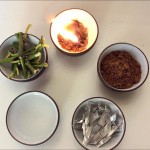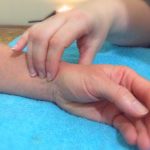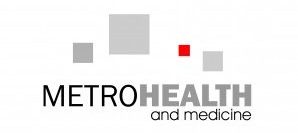 Considered one of the 6 Pathogens in Chinese Medicine, wind can cause disharmony in our body. No, in case you were wondering, we are not talking about the flatulence type of wind!
Considered one of the 6 Pathogens in Chinese Medicine, wind can cause disharmony in our body. No, in case you were wondering, we are not talking about the flatulence type of wind!
Much of Chinese medicine can be understood from observation, particularly observing our body and the environment.
While moderate wind in the environment is tolerable, in excess it can cause destruction. As a resident of Perth, WA (said to be one of the most windiest cities in the world), I have seen some pretty destructive winds. Wind erodes soil. Wind can seem to drive the cold or heat or water right in your face. Wind drys out wet and moisture. Wind moves things around the back yard that aren’t tied down!
 An acupuncturist or Chinese herbalist is concerned about the effects of wind on the body. In Chinese medicine, Wind messes with the functions of the wood element or Liver organ.
An acupuncturist or Chinese herbalist is concerned about the effects of wind on the body. In Chinese medicine, Wind messes with the functions of the wood element or Liver organ.
Common symptoms of wind can be:
- Itchiness
- moving around symptoms – pain that moves around, skin problems that move around, headaches that move around
- muscle contractions – like tremors, twitching and clenching, convulsions
- Cold and Flu
In the Nei Jing wind is referred to as the “cause of 100 diseases”. More than any other of the 6 Pathogens, wind can combine with and carry the others into our body.
Learn more about how to protect yourself from environmental wind.
There are lots of food-herbs that have properties to clear wind and heat together – the main one used is Ju Hua – Chrysanthemum. Probably so popular because it’s taste is pleasant in teas, it is often combined with Pu-Er tea or even any kind of green tea can be used with Ju Hua. Another common one is Sang Ye – Mulberry leaf. These two herbs are used in our Tong Kuai Spring Tea for the emergence and prevalence of wind in the spring season.


Acupuncture points have functions of “clearing wind” – Feng in Chinese means Wind. The points called Fengmen (wind door), Feng chi and Fengfu have all effects in clearing wind (or treating the effects of wind) of some sort.
When wind combines with cold, we call it wind-cold and this is the main start of cold and flu’s (common cold and influenza). There are foods you can use to treat the initial symptoms. Ginger tea made from slices of fresh ginger (RECIPIES HERE) can be used when you feel the very first effects of wind and cold on you – a stiff neck and a feeling of coldness.

Only a Chinese medicine practitioner can diagnose wind in the body. Maries practice is based on finding the right herbal prescription Indicidially according to your pulse diagnosis. More info about making an appointment.
IMPORTANT NOTICE: This information is provided in public interest of keeping people as healthy as possible. Common sense should always be applied. Too much of anything can be hazardous to health. This information is not intended as a substitute for medical advice or diagnosis by a health practitioner. If you have a health condition, you should check with your health care practitioner before using foods as medicine treatments, if you are in any way unsure about the suitability of the food agents, herbs or recipies for your body. In an medical emergency always contact emergency services, call 000 in Australia.
Chinese medicine organs and some words are capitalised to indicate they are different to the biomedical understanding of the organ. In Chinese medicine each organ represents the system of function according to ancient principals of understanding, including the channel system, spiritual, mental and physical functions. The traditional understanding of Chinese medicine organs is actually a functional system often encompass many now biomedically defined aspects such as lymphatic and endocrine (hormone) functions that are attributed to that organ. A lower case letter of an organ will indicate it’s reference to the biomedical organ. EG Kidney (the Kidney functions of CM) and kidney (biomedical/physical kidney).
This article is written by Marie Hopkinson, the Chinese Herbalist & Acupuncturist at Metro Health and Medicine in North Perth. Marie is available for consultation by calling 1300 132 830 or email [email protected]
(C) Marie Hopkinson 2016 Reproduction permissible only with express permission of author.

